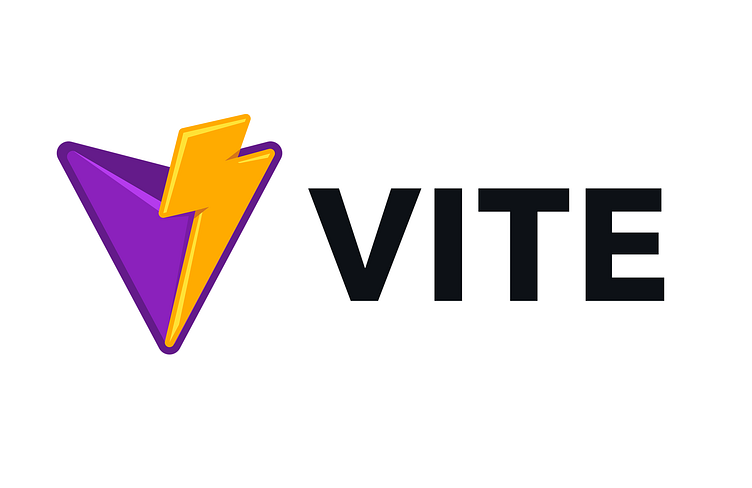In the ever-evolving landscape of web development, the tools we use to build, bundle, and serve our applications are in a constant state of flux. For years, bundlers like Webpack dominated the scene, transforming our complex projects with numerous modules into optimized, browser-friendly assets. However, this process often came with a significant trade-off: slow startup times and sluggish feedback loops during development. Then came Snowpack, a build tool that challenged the status quo by asking a simple yet revolutionary question: what if we didn’t bundle during development at all?
Snowpack burst onto the scene with the promise of a near-instant development server, leveraging a technology that had finally become ubiquitous in modern browsers: native ES Modules (ESM). By shipping unbundled code directly to the browser, it eliminated the time-consuming bundling step that plagued larger applications. While Snowpack is no longer actively maintained, its impact is undeniable. It served as a crucial catalyst, proving the viability of an ESM-powered workflow and directly inspiring the next generation of incredibly fast tools like Vite. This article explores the core concepts behind Snowpack, its implementation, its eventual succession, and the enduring legacy it leaves on the entire JavaScript ecosystem.
The Unbundled Revolution: Understanding Snowpack’s Core Concepts
To fully appreciate Snowpack’s innovation, one must first understand the problem it set out to solve. The world of frontend development, from the latest React News to updates in the Angular News community, relies heavily on modular code, often managed through npm. Traditional build tools took on the monumental task of resolving this web of dependencies, transforming them into a handful of JavaScript files the browser could execute. This had a profound impact on the developer experience.
From Bundling to Native ESM
Tools like Webpack, Rollup, and Parcel operate on a bundling principle. When you save a file, they re-trace the dependency graph, re-bundle the necessary code, and then serve it. For small projects, this is fast. For large-scale applications, this can translate to waiting seconds—or even minutes—for the dev server to start or reflect a change. This latency breaks the creative flow and hampers productivity.
Snowpack’s approach was fundamentally different. It was built around the idea that modern browsers can understand import and export statements natively. Instead of bundling your entire application, Snowpack’s dev server would serve each file individually. When you requested /src/App.js, it served that file. If App.js imported ./Button.js, the browser would then make a separate request for that file. This one-file-at-a-time model meant that a change to a single component only required that one file to be rebuilt and re-served, leading to consistently fast updates regardless of project size. This concept has become central to the latest Vite News and is a testament to Snowpack’s foresight.
How Snowpack Managed Dependencies
The one challenge with this model was `node_modules`. Most npm packages are not published as native ESM and can have deep, complex dependency trees that would result in thousands of network requests. Snowpack solved this with a clever pre-processing step. On the first run, it would scan your `node_modules`, bundle each dependency into a single, ESM-compatible JavaScript file, and place it in a `web_modules/` directory. Your application code could then import dependencies like React or Lodash with a simple path, which the dev server would resolve to the pre-built file. This initial optimization was key to making the unbundled approach feasible.
// snowpack.config.mjs
/** @type {import("snowpack").SnowpackUserConfig} */
export default {
mount: {
public: { url: '/', static: true },
src: { url: '/dist' },
},
plugins: [
'@snowpack/plugin-react-refresh',
'@snowpack/plugin-dotenv',
'@snowpack/plugin-typescript',
],
route: [
/* Example: Enable an SPA Fallback in development: */
// {"match": "routes", "src": ".*", "dest": "/index.html"},
],
optimize: {
/* Example: Bundle and minify for production */
// "bundle": true,
// "minify": true,
// "target": "es2020"
},
packageOptions: {
/* Source npm packages from a CDN */
// "source": "remote"
},
devOptions: {
/* Change the port and other dev server options */
// "port": 3000
},
buildOptions: {
/* Change the output directory */
// "out": "build"
},
};Implementing a Project with Snowpack: A Historical Perspective
Although developers are now encouraged to use tools like Vite or Next.js, looking back at how a Snowpack project was structured provides valuable insight into the mechanics of ESM-powered development. The developer experience was designed to be simple and intuitive, abstracting away complex configurations for most common use cases.
Initializing a New Project
Getting started was typically handled by `create-snowpack-app` (CSA), a command-line tool that provided official templates for a wide array of frameworks. Whether you were following the latest Svelte News or building with Preact, there was likely a template for you. This allowed developers to jump straight into coding without the “configuration fatigue” often associated with setting up a new project.
A typical project would have a simple structure: a `public/` directory for static assets like `index.html`, and a `src/` directory for your JavaScript, CSS, and component files. The `index.html` file was the entry point, and it would load your JavaScript using a standard module script tag.
<!DOCTYPE html>
<html lang="en">
<head>
<meta charset="UTF-8">
<meta name="viewport" content="width=device-width, initial-scale=1.0">
<title>Snowpack App</title>
</head>
<body>
<div id="root"></div>
<!-- Load your application's entry point as a module -->
<script type="module" src="/dist/index.js"></script>
</body>
</html>The Development Server and HMR
Running `snowpack dev` would fire up the development server. Its most celebrated feature was Hot Module Replacement (HMR). Because of the unbundled nature, HMR was incredibly fast and reliable. When a file was changed, Snowpack only had to process that single file and signal to the browser to hot-swap it. There was no re-bundling, so the update was reflected in the browser almost instantaneously. This tight feedback loop was a game-changer for developer productivity.
Plugins were central to the Snowpack ecosystem, handling transformations for file types that browsers don’t understand natively, such as JSX, TypeScript, or Svelte components. For example, when working with React, `@snowpack/plugin-react-refresh` would be used to enable HMR for components, preserving state across reloads. This modular approach kept the core light while allowing for extensive customization, a pattern we see in many modern tools, from the latest ESLint News about plugins to new bundlers like Turbopack News.
import React, { useState, useEffect } from 'react';
import ReactDOM from 'react-dom';
import './App.css';
function App() {
const [count, setCount] = useState(0);
useEffect(() => {
const timer = setTimeout(() => setCount(count + 1), 1000);
return () => clearTimeout(timer);
}, [count]);
return (
<div className="App">
<header className="App-header">
<h1>Welcome to Snowpack with React!</h1>
<p>Page has been open for <code>{count}</code> seconds.</p>
</header>
</div>
);
}
ReactDOM.render(
<React.StrictMode>
<App />
</React.StrictMode>,
document.getElementById('root'),
);
// Hot Module Replacement (HMR) - Make sure to export a component for HMR to work!
export default App;The Ecosystem, Production Builds, and the End of an Era
While Snowpack excelled in development, the production story was more complex. The very feature that made it fast for development—serving many small, unbundled files—is often an anti-pattern for production, where minimizing network requests is crucial for performance. This created a dichotomy that the tool had to address.
Building for Production

For production builds, Snowpack offered an `optimize` configuration that could bundle, minify, and transpile the code for older browsers. Under the hood, it integrated with established tools like Rollup or Webpack to perform these optimizations. While this was a pragmatic solution, it meant that the code running in production was fundamentally different from the code served in development. This could occasionally lead to bugs that only appeared after a build, slightly undermining the consistency of the development environment. This dev/prod parity is a challenge that all modern meta-frameworks, from Next.js News to Nuxt.js News, continue to refine.
{
"scripts": {
"start": "snowpack dev",
"build": "snowpack build",
"test": "jest"
},
"dependencies": {
"react": "^17.0.2",
"react-dom": "^17.0.2"
},
"devDependencies": {
"@snowpack/plugin-react-refresh": "^2.5.0",
"@snowpack/plugin-typescript": "^1.2.1",
"@testing-library/react": "^12.1.2",
"jest": "^27.3.1",
"snowpack": "^3.8.8",
"typescript": "^4.4.4"
}
}The Rise of Vite and the Fading of Snowpack
The “Snowpack News” of today is that the project is officially archived and no longer maintained. Its spiritual successor is Vite. Created by Evan You (the creator of Vue.js), Vite was heavily inspired by Snowpack’s ESM-based dev server but improved upon the formula in several key areas. Vite also provides an unbundled development experience, but it uses esbuild—a bundler written in Go—to pre-bundle dependencies. This is orders of magnitude faster than Snowpack’s JavaScript-based approach. Furthermore, Vite uses Rollup for its production build command, offering a more cohesive, highly optimized, and out-of-the-box experience that has been battle-tested for years. The JavaScript community, from those following Node.js News to framework authors, quickly recognized these advantages, and Vite’s adoption skyrocketed. The Snowpack team gracefully acknowledged this shift, recommending that users migrate to Vite for a better-supported and more performant experience.
Snowpack’s Legacy: Lessons and Modern Alternatives
Though its time in the spotlight was brief, Snowpack’s influence on modern web development is profound. It acted as a proof-of-concept for a new generation of build tools, fundamentally changing our expectations for developer experience and performance.
The Paradigm Shift It Inspired

Snowpack’s greatest contribution was normalizing the use of native ES Modules in the development workflow. It demonstrated that we could move away from monolithic bundling during development and lean on the browser’s own capabilities. This paradigm shift directly paved the way for Vite and has influenced the broader ecosystem. We see its echoes in the ongoing TypeScript News about module outputs, and in the architecture of new tools that prioritize speed and modern browser features. It forced the community to re-evaluate long-held assumptions about the necessity of bundling at every stage of development.
Key Takeaways for Today’s Developers
The story of Snowpack offers several timeless lessons:
- Leverage Native APIs: Snowpack’s success was built on a native browser feature (ESM). As platforms evolve, building on top of their native capabilities rather than re-implementing them in JavaScript often leads to massive performance gains.
- Developer Experience is a Core Feature: The focus on instant startup and fast HMR proved that DX is not a luxury but a critical component of a productive toolchain. This has raised the bar for all tools, from testing frameworks like Jest News and Cypress News to bundlers.
- The Ecosystem is Self-Correcting: Snowpack identified a major pain point. Vite refined the solution. This iterative process of innovation is what drives the web forward. A good idea, even if not the final implementation, can be the catalyst for something even better.
// The simple, powerful idea Snowpack was built on:
// The browser can handle this import natively without a bundler.
import { confetti } from './utils/confetti.js';
document.querySelector('#celebrate-button').addEventListener('click', () => {
confetti();
});Conclusion
Snowpack may no longer be an active project, but its chapter in the history of web development is a critical one. It was a bold and innovative tool that successfully challenged the dominance of traditional bundlers and championed a faster, leaner approach to building for the web. By proving the viability of an unbundled, ESM-first development workflow, it laid the essential groundwork for Vite and other modern tools that now define the cutting edge of the developer experience.
For developers today, understanding Snowpack’s journey provides valuable context for the tools we use. It’s a powerful reminder that the ecosystem is constantly evolving, with each new tool building on the lessons of its predecessors. The ideas pioneered by Snowpack continue to shape the future of web development, ensuring that the tools of tomorrow will be faster, smarter, and more delightful to use.

